#Decade on Ecosystem Restoration
Explore tagged Tumblr posts
Text
Focusing on wildfire prevention and management.
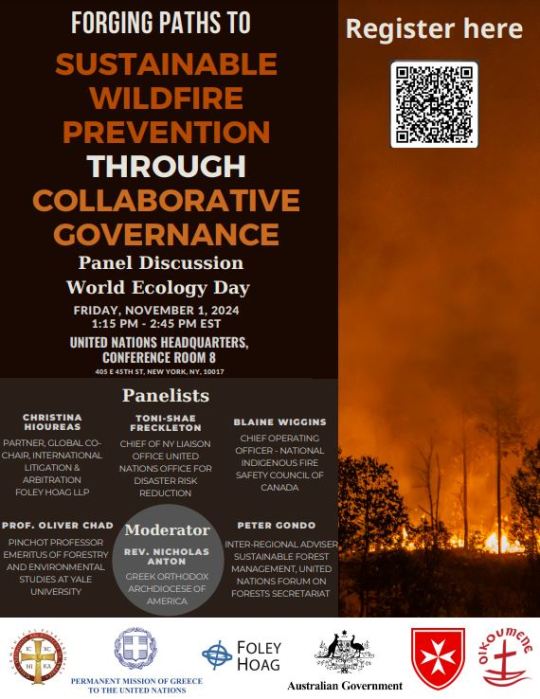
In light of this growing crisis, we are organizing a side event on November 1st, World Ecology Day, focusing on wildfire prevention and management under this year’s theme of environmental protection and sustainability. Recent studies and events, including the UN’s Department Economic and Social Affairs (DESA) Policy Brief #111, highlight the need for comprehensive strategies that integrate scientific, traditional, and policy-driven approaches to wildfire management. Get the flyer!
#wildfire#united nations department of economic and social affairs#comprehensive strategies#panel discussion#wildfires prevention#frequency and severity of wildfires#wildfire management#capacity building#adaptative management#restorative activities#bushfire#1 november#world ecology day#ecological and hydrological connectivity#ecological restoration#decade on ecosystem restoration#sustainable practices#environmental protection#sustainability
0 notes
Text
Guys they reintroduced Galapagos tortoises to espanola island and they’ve essentially terraformed their environment, knocking over invasive plants so that endangered albatrosses (who need space to take off using the ground as a runway) have returned and established nests!
https://www.popsci.com/environment/galapagos-giant-tortoises-ecosystem-conservation/
33K notes
·
View notes
Text
Celebrating Our Volunteers: Every Moment Matters

View On WordPress
#EveryMomentMatters#NVW2024 EveryMomentMatters TriplePlanetaryCrisis#TriplePlanetaryCrisis#and United Nations Decade on Ecosystem Restoration 2021-2030#Appreciation#Canada#cares#charity#Climate Action#conservation#dedication#environment#Every Moment Matters#forest#Fourth International Decade for the Eradication of Colonialism 2021-2030#Friends of the Saskatoon Afforestation Areas Inc.#gaurdians#George Genereux Afforestation Area#George Genereux Urban REgional Park#Good Health and Well-Being#gratitude#interconnected#International Decade of Indigenous Languages 2022-2032#International Decade of Sciences for Sustainable Development 2024–2033#Life on Land#life under water#meaningful#Nature#non profit#Richard St. Barbe Baker
0 notes
Text
"The Lower Ninth Ward of New Orleans has recently witnessed an incredible eco-renaissance following decades of damage and neglect.
Led by a local community development group, a 40-acre wetlands park has been restored to glories past with hundreds of local trees that attract over a hundred species of birds, plus joggers, picnickers, and nature lovers besides.
The story begins with Rashida Ferdinand, founder of Sankofa Community Development Corporation (CDC). Growing up in this historic part of New Orleans, where Black homeownership thrived, where Fats Domino was born, and where locals routinely went out into the wetlands to catch fish and crustaceans, she watched as it suffered from years of neglect.
Poor drainage, ruined roads, illegal trash dumping, and unmitigated damage from hurricanes slowly wasted the wetland away until it was a derelict eyesore.
In the name of restoring this wild heritage indicative of the culture in the Lower Ninth, and in order to protect her communities from flooding, Ferdinand founded the Sankofa CDC, and in 2014 entered into an agreement with the City of New Orleans for the restoration of Sankofa—a 40-acre section of neglected wetlands in the heart of the Lower Ninth.
The loss of Sankofa’s potential to dampen flooding from storms meant that over the years dozens of houses and properties were flooded and damaged beyond the ability of the inhabitants to recover. Forced out by a combination of nature’s fury and government failure, the cultural heritage of the community was receding along with the floodwaters.
Ferdinand knew that restoring natural flood barriers like Sankofa was key to protecting her community.
“Hurricane protection is a major concern in the community, but there’s a lack of trust in the infrastructure systems that are supposed to protect us,” Ferdinand told the Audubon Society.
Today, Sankofa Wetlands Park is a sight to behold. Hiking trails snake through a smattering of ponds and creeks, where bald cypresses and water tupelo trees continue to grow and cling to the ground even during storms. Picnic benches have appeared, wheelchair-accessible trails connect sections of the park to parts of the Lower Ninth, and local businesses are seeing more visitors.
It needed a lot of work though. Thousands of invasive tallow trees had to be uprooted. 27,000 cubic meters of illegally dumped trash compacted into the dirt had to be removed. A 60-year-old canal dug by the US Army Corps of Engineers had to be disconnected, and all new native flora had to be planted by hand.
Audubon says that Ferdinand routinely can’t believe her eyes when she looks at the transformation of Sankofa into its current state.
“Seeing butterflies, birds, and other pollinators in the park is a sign of a healthy ecosystem,” she says. “All we had to do was create the right conditions.”
Slated for official completion in 2025 with an outdoor amphitheater, interpretive signage, and additional trails, Ferdinand and the CDC have their eyes set on an even larger area of wetlands to the north of Sankofa.
Along the way, Ferdinand and the CDC attracted many helping hands, and entered into many partnerships, But the catalyst for change arose from the spirit and determination of one woman in the right place at the right time, for the benefit of hundreds in this historic heart of a historic city."
-via Good News Network, September 17, 2024
#new orleans#louisiana#nola#united states#wildlife#wetlands#ecology#ecological restoration#conservation#good news#hope
3K notes
·
View notes
Text
🐾🌊 Sending a frond farewell! 🌊🐾
🎉 We're shell-ebrating an otterly amazing journey and wishing our beloved sea otter, Kit, the very best as she embarks on a new adventure at the Detroit Zoo!
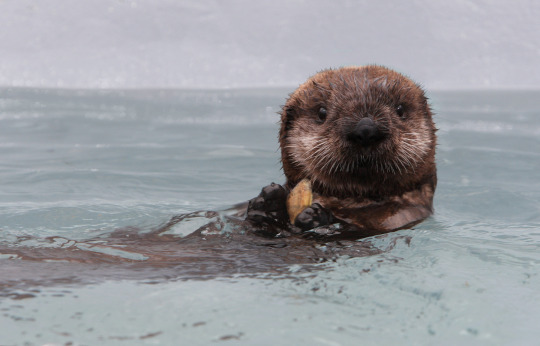
🦦Kit turned 14 in December 2023, and after a decade of being a super-mom in our Sea Otter Surrogacy Program, it's time for her to enjoy a well-deserved retirement. Kit has been a pawsome surrogate mom, raising 10 pups and contributing greatly to the conservation of southern sea otters.
🌍Our Sea Otter Surrogacy Program has been making waves since 2001, helping to recover California’s southern sea otter population. Thanks to our dedicated team and partners, we can give orphaned pups a second chance at life by rescuing, raising, and releasing them. Back in the wild, they help restore and support healthy ecosystems–playing a key role in combating climate change.
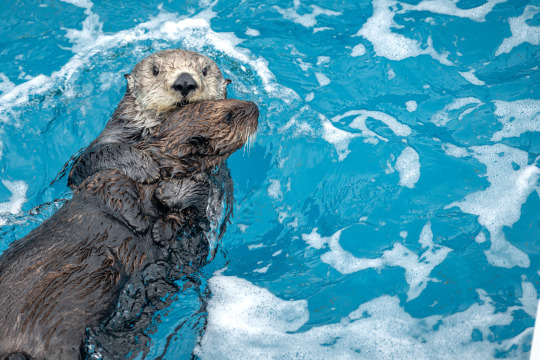
🙌 Why Detroit? After reaching out to other AZA facilities, we found Detroit Zoo to be the pawfect fit for Kit! They have a wonderful sea otter program, and Kit's presence will be a great addition to their social group.
🌟Although we’ll miss Kit dearly, her move allows us to continue our important surrogacy work here at the Monterey Bay Aquarium and allows a younger female otter to join our team and carry on Kit's incredible legacy.
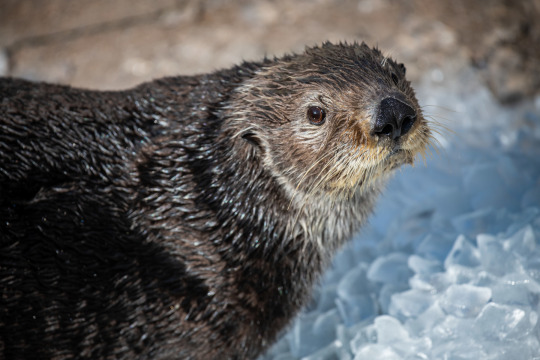
🦸 So here's to Kit, our fin-tastic frond, who has been nothing short of otterly wonderful! We wish her the best of luck and lots of joy in her new home.
💙 See her before she leaves. The last day our guests will be able to visit Kit will be Monday June 3rd. She will then move off exhibit to prepare for her journey to her new home. Check her out in her new home in Detroit later this summer.
1K notes
·
View notes
Text
Good News - June 15-21
Like these weekly compilations? Tip me at $Kaybarr1735! And if you tip me and give me a way to contact you, at the end of the month I'll send you a link to all of the articles I found but didn't use each week!
1. Victory for Same-Sex Marriage in Thailand

“Thailand’s Senate voted 130-4 today to pass a same-sex marriage bill that the lower house had approved by an overwhelming majority in March. This makes Thailand the first country in Southeast Asia, and the second in Asia, to recognize same-sex relationships. […] The Thai Marriage Equality Act […] will come into force 120 days after publication in the Royal Gazette. It will stand as an example of LGBT rights progress across the Asia-Pacific region and the world.”
2. One of world’s rarest cats no longer endangered
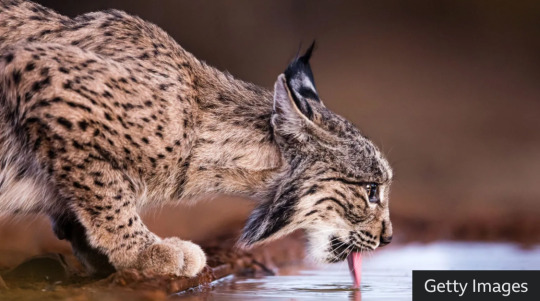
“[The Iberian lynx’s] population grew from 62 mature individuals in 2001 to 648 in 2022. While young and mature lynx combined now have an estimated population of more than 2,000, the IUCN reports. The increase is largely thanks to conservation efforts that have focused on increasing the abundance of its main food source - the also endangered wild rabbit, known as European rabbit. Programmes to free hundreds of captive lynxes and restoring scrublands and forests have also played an important role in ensuring the lynx is no longer endangered.”
3. Planning parenthood for incarcerated men
“[M]any incarcerated young men missed [sex-ed] classroom lessons due to truancy or incarceration. Their lack of knowledge about sexual health puts them at a lifelong disadvantage. De La Cruz [a health educator] will guide [incarcerated youths] in lessons about anatomy and pregnancy, birth control and sexually transmitted infections. He also explores healthy relationships and the pitfalls of toxic masculinity. […] Workshops cover healthy relationships, gender and sexuality, and sex trafficking.”
4. Peru puts endemic fog oasis under protection
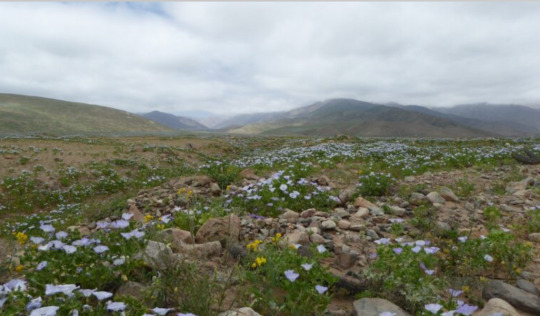
“Lomas are unique ecosystems relying on marine fog that host rare and endemic plants and animal species. […] The Peruvian government has formally granted conservation status to the 6,449-hectare (16,000-acre) desert oasis site[….] The site, the first of its kind to become protected after more than 15 years of scientific and advocacy efforts, will help scientists understand climatic and marine cycles in the area[, … and] will be protected for future research and exploration for at least three decades.”
5. Religious groups are protecting Pride events — upending the LGBTQ+ vs. faith narrative

“In some cases, de-escalation teams stand as a physical barrier between protesters and event attendees. In other instances, they try to talk with protesters. The goal is generally to keep everyone safe. Leigh was learning that sometimes this didn’t mean acting as security, but doing actual outreach. That might mean making time and space to listen to hate speech. It might mean offering food or water. […] After undergoing Zoom trainings this spring, the members of some 120 faith organizations will fan out across more than 50 Pride events in 16 states to de-escalate the actions of extremist anti-LGBTQ+ hate groups.”
6. 25 years of research shows how to restore damaged rainforest
“For the first time, results from 25 years of work to rehabilitate fire-damaged and heavily logged rainforest are now being presented. The study fills a knowledge gap about the long-term effects of restoration and may become an important guide for future efforts to restore damaged ecosystems.”
7. Audubon and Grassroots Carbon Announce First-of-its-Kind Partnership to Reward Landowners for Improving Habitats for Birds while Building Healthy Soils
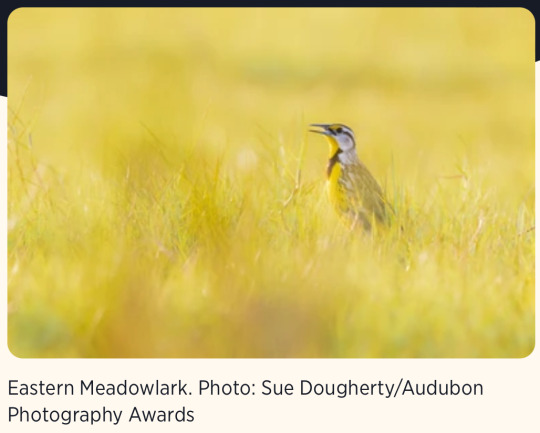
“Participating landowners can profit from additional soil carbon storage created through their regenerative land management practices. These practices restore grasslands, improve bird habits, build soil health and drive nature-based soil organic carbon drawdown through the healthy soils of farms and ranches. […] Additionally, regenerative land management practices improve habitats for birds. […] This partnership exemplifies how sustainable practices can drive positive environmental change while providing tangible economic benefits for landowners.”
8. Circular food systems found to dramatically reduce greenhouse gas emissions, require much less agricultural land
“Redesigning the European food system will reduce agricultural land by 44% while dramatically reducing greenhouse gas emissions from agriculture by 70%. This reduction is possible with the current consumption of animal protein. “Moreover, animals are recyclers in the system. They can recycle nutrients from human-inedible parts of the organic waste and by-products in the food system and convert them to valuable animal products," Simon says.”
9. Could Treating Injured Raptors Help Lift a Population? Researchers found the work of rehabbers can have long-lasting benefits
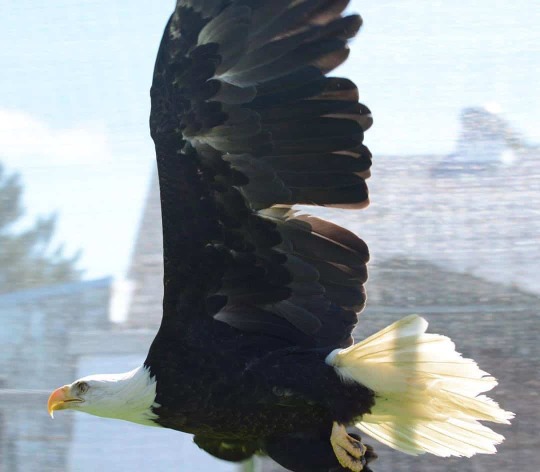
“[“Wildlife professionals”] tend to have a dismissive attitude toward addressing individual animal welfare,” [… but f]or most raptor species, they found, birds released after rehabilitation were about as likely to survive as wild birds. Those released birds can have even broader impacts on the population. Back in the wild, the birds mate and breed, raising hatchlings that grow up to mate and breed, too. When the researchers modeled the effects, they found most species would see at least some population-level benefits from returning raptors to the wild.”
10. Indigenous people in the Amazon are helping to build bridges & save primates
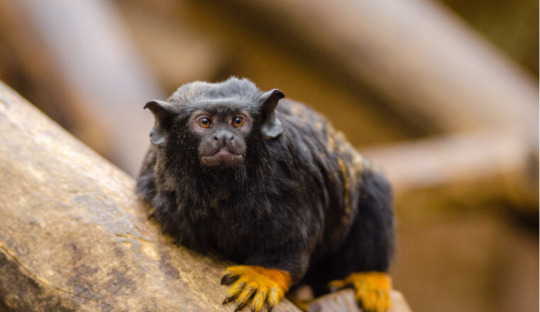
“Working together, the Reconecta Project and the Waimiri-Atroari Indigenous people build bridges that connect the forest canopy over the BR-174 road[….] In the first 10 months of monitoring, eight different species were documented — not only monkeys such as the golden-handed tamarin and the common squirrel monkey (Saimiri sciureus), but also kinkajous (Potos flavus), mouse opossums (Marmosops sp.), and opossums (Didelphis sp.).”
Bonus: A rare maneless zebra was born in the UK
June 8-14 news here | (all credit for images and written material can be found at the source linked; I don’t claim credit for anything but curating.)
#hopepunk#good news#lgbtq#gay rights#gay marriage#same sex marriage#thailand#lynx#big cats#cats#endangered species#endangered#sex education#prison#peru#conservation#habitat#religion#pride#faith#pride month#lgbt pride#compassion#rainforest#birds#nature#climate change#wildlife rehab#wildlife#indigenous
1K notes
·
View notes
Text
Ecology is one of those disciplines where there is just so, so much we don't understand yet. Yes, we know that the many species within a given ecosystem have a widespread, complex network of interrelationships, but we only have the barest understanding of a fraction of them. It's like having a symphony where you've heard everyone playing, but you only have some notes from some of the musicians' sheet music, and so you can't yet put together how it all works.
In this case, we're seeing just how important northern pocket gophers (Thomomys talpoides) are to their ecosystems. After the devastating eruption of Lawetlat'la/Loowit/Mt. St. Helens in May 1980, the land was left burned and covered in tons of ash and tephra. While some zones further out from the mountain were replanted by timber companies, the area directly around the eruption site has been allowed to recover naturally because this offers North American scientists an unprecedented chance to see how an ecosystem recovers after such a large eruption, at a place that is easily accessible.
When a small number of gophers were returned to an ash-covered area of the mountain for just twenty-four hours in 1982, they kicked off what would be a forty-year study in ecological resilience. In areas with no gophers, there were only a few struggling plants born from seeds transported by birds, while in places where the little mammals were able to burrow and turn over dirt, scientists found 40,000 individual plants. This was due to the fact that the gophers were able to free soil fungi and other microbes beneath the ash and give them a chance to repopulate closer to the surface where they normally would be found. In turn, seeds of plants that had mycorrhizal relationships with the fungi, or which otherwise benefited from the increased microbial biodiversity, flourished.
And forty years later, the pattern still stands, with the gophers' work reverberating to this day. If one small mammal can have such a profound effect in a miniscule amount of time, imagine what happens when we reintroduce extirpated species to other eplaces. The volcanic area may be left to repopulate naturally as scientists continue to study it, but there are countless badly damaged ecosystems in need of restoration. The results of this experiment clearly support the importance of returning as many native species to an ecosystem as possible, because even those that may seem insignificant have invaluable contributions to make to the whole.
#nature#wildlife#animals#ecology#environment#science#conservation#scicomm#pnw#pacific northwest#Mt. St. Helens#Lawetlat'la#Loowit#habitat restoration#restoration ecology#gophers#Washington#good news
456 notes
·
View notes
Text
With the Klamath River dam removals and the growing push to remove dams in other rivers to restore ecosystems and ways of life for many tribes, I wonder how cities in North America will change in the following decades and centuries. The existence of a lot of US cities (and cities in many other places) is centered around dams keeping rivers under "control" (also leading to more extreme problems with both droughts and flooding) and so many cities either couldn't stay as they are or simply couldn't exist if the rivers they're built on are restored.
A big issue now is that urban spaces are so tightly packed in small areas that they put tremendous demand on both resources and the land itself, so would restoring the rivers lead to urban areas that are more sprawling and less densely populated than existing cities? Would architecture and city design be adapted to be more like the Native cities pre-colonization, to handle the natural ebbs and flows of the rivers better? Hmm.
188 notes
·
View notes
Text
Birds Sing Anew After Residents of New Orleans Ninth Ward Restore 40-Acre Wetland to Historic Glory https://www.goodnewsnetwork.org/birds-sing-anew-from-within-40-acre-wetland-restored-by-residents-of-n-orleans-historic-lower-ninth/

The Lower Ninth Ward of New Orleans has recently witnessed an incredible eco-renaissance following decades of damage and neglect.
Led by a local community development group, a 40-acre wetlands park has been restored to glories past with hundreds of local trees that attract over a hundred species of birds, plus joggers, picnickers, and nature lovers besides.
The story begins with Rashida Ferdinand, founder of Sankofa Community Development Corporation (CDC). Growing up in this historic part of New Orleans, where Black homeownership thrived, where Fats Domino was born, and where locals routinely went out into the wetlands to catch fish and crustaceans, she watched as it suffered from years of neglect.
Poor drainage, ruined roads, illegal trash dumping, and unmitigated damage from hurricanes slowly wasted the wetland away until it was a derelict eyesore.
In the name of restoring this wild heritage indicative of the culture in the Lower Ninth, and in order to protect her communities from flooding, Ferdinand founded the Sankofa CDC, and in 2014 entered into an agreement with the City of New Orleans for the restoration of Sankofa—a 40-acre section of neglected wetlands in the heart of the Lower Ninth.
The loss of Sankofa’s potential to dampen flooding from storms meant that over the years dozens of houses and properties were flooded and damaged beyond the ability of the inhabitants to recover. Forced out by a combination of nature’s fury and government failure, the cultural heritage of the community was receding along with the floodwaters.
Ferdinand knew that restoring natural flood barriers like Sankofa was key to protecting her community.
“Hurricane protection is a major concern in the community, but there’s a lack of trust in the infrastructure systems that are supposed to protect us,” Ferdinand told the Audubon Society.
Today, Sankofa Wetlands Park is a sight to behold. Hiking trails snake through a smattering of ponds and creeks, where bald cypresses and water tupelo trees continue to grow and cling to the ground even during storms. Picnic benches have appeared, wheelchair-accessible trails connect sections of the park to parts of the Lower Ninth, and local businesses are seeing more visitors.
Visiting birders have recorded sightings of over 100 species of songbirds, ducks, near-shore waders of all kinds, egrets, and herons, and the park also acts as a home and refuge for otters, beavers, and a variety of amphibians and reptiles.
It needed a lot of work though. Thousands of invasive tallow trees had to be uprooted. 27,000 cubic meters of illegally dumped trash compacted into the dirt had to be removed. A 60-year-old canal dug by the US Army Corps of Engineers had to be disconnected, and all new native flora had to be planted by hand.
Audubon says that Ferdinand routinely can’t believe her eyes when she looks at the transformation of Sankofa into its current state.
“Seeing butterflies, birds, and other pollinators in the park is a sign of a healthy ecosystem,” she says. “All we had to do was create the right conditions.”
Slated for official completion in 2025 with an outdoor amphitheater, interpretive signage, and additional trails, Ferdinand and the CDC have their eyes set on an even larger area of wetlands to the north of Sankofa.
Along the way, Ferdinand and the CDC attracted many helping hands, and entered into many partnerships, But the catalyst for change arose from the spirit and determination of one woman in the right place at the right time, for the benefit of hundreds in this historic heart of a historic city.
#new orleans#good news#environmentalism#science#environment#nature#usa#restoration#rewilding#wetlands#conservation#climate change#climate crisis#animals#birds#trees#disaster prevention and preparedness
182 notes
·
View notes
Text
Since TCAF withdrew support for the Darling 58 chestnut tree after it wasn't resistant enough to blight for planting, the anti-GMO folks have taken it and run with it, to the point that this is one of the top google results for darling 58
This writer describes the Darling 58 project as "releasing a genetically modified organism into the wild to contaminate its wild relatives" and is calling for the USDA to "pull the plug on this ill-conceived experiment."
Pretty sure he is either stupid or was paid from an unsavory source of money, since he conveniently forgets to mention that the "wild relatives" are mostly dying stumps or young trees in very isolated, secret areas, and the project intends to "contaminate" them with the ability to continue as a species.
American Chestnut is a keystone species. It's hardly even possible for the impacts of a genetically modified chestnut tree to be worse than the impacts of NO chestnut trees AT ALL.
Also...Darling 58 was never supposed to be the one thing that saves the American Chestnut forever! We need trees with tiny bits of occasional resistance so we can continue breeding trees with greater levels of resistance! The main reason they're withdrawing support for the deregulation is that they're worried the trees would damage public opinion of the project if they are still too susceptible to blight.
The "mix-up" the writers refer to is just that the trees identified as Darling 58 were actually Darling 54. This would not change the deregulation process at all, so I don't know why he thinks it would.
Genetic modification is FAR from the only strategy TCAF's restoration project encompasses, for example they are studying the genome of Chinese Chestnuts to identify genes for blight resistance so we can figure out how to insert those into American Chestnut. This is basically the same as the crossbreeding and backcrossing we've already been doing for decades, except it can actually be done quickly enough to make a difference in time for the rest of the ecosystem.
279 notes
·
View notes
Text
Principle 4 - Ecosystem restoration aims to achieve the highest level of recovery for biodiversity, ecosystem health and integrity and human well-being.

Ecosystem restoration aims to achieve and sustain the greatest net gain possible, given project- and programme-level goals, for biodiversity, ecosystem health and integrity, ecosystem goods and services, climate-change mitigation, and human health and well-being at local, national and global scales. It should enhance and not be a substitute for nature conservation, especially in areas with high ecological integrity and high value for ensuring ecological connectivity, as well as in other priority areas for conservation, including those within the territories of Indigenous peoples and traditional communities. Management practices intended to be restorative should support and assist natural recovery processes and not cause further degradation. The use of genetically appropriate germplasm of native species should be favoured, whereas non-native species potentially or already proven to be invasive should be avoided.

#Benefits to people and nature#ecosystem health and integrity#biodiversity protection#biomes#biodiversity loss#decade on ecosystem restoration#ecology#ecological and hydrological connectivity#ecological restoration#climate change mitigation#sdg12#sdg15#sdg13#decade on ecosystem restoratio#restorative activities#ecosystem restoration#non-native species#native species#conservation efforts#effective practices#sustainable practices#iucn#food and organization organization#united nations environment programme#land degradation neutrality#degraded terrestrial ecosystem#degraded marine ecosystem
0 notes
Text
Biggest galaxy brain moment from visiting the Dune dunes is that it gave me a whole new perspective on why the terraforming of Arrakis is treated with such deep ambivalence by the text. Because the terraforming process that's described in great detail in the book? That's exactly what's happening to the Oregon dunes. And they're disappearing.

At the beginning of the 20th century, the open sand you see in this picture stretched all the way to the Pacific Ocean, which is visible here as a faint blue-gray line about halfway up the photo. The sea washed new sand ashore, and the seasonal wind cycles blew it into a constantly-shifting landscape of dunes, tree islands, ghost forests and both permanent and ephemeral lakes and rivers.
As European colonization of the Pacific Northwest grew, the new settlers and the logging and commercial fishing industries they brought with them wanted permanent towns and roads that weren't constantly being swallowed by the moving sand. Starting in the 1930s, European beachgrass and other non-native species were introduced to try to hold the dunes in place.
The invasive species did hold the dunes in place--too well. The deep roots of the beachgrass shaped the sand blowing in off the beach into a permanent dune parallel to the ocean, called the foredune.

As the foredune got taller, it blocked both wind and the movement of sand, which allowed the land behind it to become grassland...

then forest.

Walking through this area, you might never know there was a dune under your feet. You can be close enough to hear the ocean, but there is almost NO wind--the main force that shapes the dunes.
There are (slow, difficult) remediation efforts underway to control the European beachgrass and restore at least some of the area to the natural dune cycle that created the miles and miles of open sand. But the ecological feedback loop created by introducing the beachgrass is stubborn, and without any further intervention, the dunes could be completely covered with forest in as little as a few decades. (I've heard estimates from 50 to 150 years, both of which are a blink of an eye in geological timescales.) The Oregon dunes are at least 100,000 years old, and within the span of just a few human lifetimes the ecosystem could be irrevocably changed.
The dune stabilization project is what Frank Herbert came to Florence to research for a never-written magazine article. Herbert began writing Dune in the mid-1950s, but by the mid-60s when the book was published, his own politics had shifted as he was influenced by the growing environmental movement and by Native activism happening around him in the Pacific Northwest. Like the story of the Oregon dunes, the terraforming of Arrakis is initially promoted as triumph of science and human rationality over nature that will make people's lives easier. But it ends up destroying the native ecosystem and the way of life of the planet's indigenous people, as becomes clear in Dune Messiah when Paul actually implements the terraforming project. (In the book, Dr. Kynes, the main architect of the terraforming project, dies in a spice blow--literally swallowed whole by the planet he tried to control.) It's one of the many political/ideological tensions in the story that's presented but not resolved, and I'm super curious to see how this element of the story is handled in Villeneuve's Dune Messiah.
All photos above taken by me at the Oregon Dunes National Recreation Area in September 2024.
136 notes
·
View notes
Text
Preserving Nature's Treasure: How National Forest Week in Saskatoon Supports Biodiversity and Sustainable Development

View On WordPress
#biodiversity#Friends of the Saskatoon Afforestation Areas Inc.#George Genereux Urban REgional Park#National Forest Week#Richard St. Barbe Baker#Richard St. Barbe Baker AFforestation ARea#Saskatchewan#Saskatoon#United Nations Decade of Action on Nutrition#United Nations Decade on Ecosystem Restoration
0 notes
Text
"Many people know about the Yellowstone wolf miracle. After wolves were reintroduced to the national park in the mid-1990s, streamside bushes that had been grazed to stubble by out-of-control elk populations started bouncing back. Streambank erosion decreased. Creatures such as songbirds that favor greenery along creeks returned. Nearby aspens flourished.
While there is debate about how much of this stemmed from the wolves shrinking the elk population and how much was a subtle shift in elk behavior, the overall change was dramatic. People were captivated by the idea that a single charismatic predator’s return could ripple through an entire ecosystem. The result was trumpeted in publications such as National Geographic.
But have you heard about the sea otters and the salt marshes? Probably not.
It turns out these sleek coastal mammals, hunted nearly to extinction for their plush pelts, can play a wolf-like role in rapidly disappearing salt marshes, according to new research. The findings highlight the transformative power of a top predator, and the potential ecosystem benefits from their return.
“It begs the question: In how many other ecosystems worldwide could the reintroduction of a former top predator yield similar benefits?” said Brian Silliman, a Duke University ecologist involved in the research.
The work focused on Elk Slough, a tidal estuary at the edge of California’s Monterey Bay. The salt marsh lining the slough’s banks has been shrinking for decades. Between 1956 and 2003, the area lost 50% of its salt marshes.
Such tidal marshes are critical to keeping shorelines from eroding into the sea, and they are in decline around the world. The damage is often blamed on a combination of human’s altering coastal water flows, rising seas and nutrient pollution that weakens the roots of marsh plants.
But in Elk Slough, a return of sea otters hinted that their earlier disappearance might have been a factor as well. As many as 300,000 sea otters once swam in the coastal waters of western North America, from Baja California north to the Aleutian Islands. But a fur trade begun by Europeans in the 1700s nearly wiped out the animals, reducing their numbers to just a few thousand by the early 1900s. Southern sea otters, which lived on the California coast, were thought to be extinct until a handful were found in the early 1900s.
In the late 1900s, conservation organizations and government agencies embarked on an effort to revive the southern sea otters, which remain protected under the Endangered Species Act. In Monterey Bay, the Monterey Bay Aquarium selected Elk Slough as a prime place to release orphaned young sea otters taken in by the aquarium.
As the otter numbers grew, the dynamics within the salt marsh changed. Between 2008 and 2018, erosion of tidal creeks in the estuary fell by around 70% as otter numbers recovered from just 11 animals to nearly 120 following a population crash tied to an intense El Niño climate cycle.
While suggestive, those results are hardly bulletproof evidence of a link between otters and erosion. Nor does it explain how that might work.
To get a more detailed picture, the researchers visited 5 small tidal creeks feeding into the main slough. At each one, they enclosed some of the marsh with fencing to keep out otters, while other spots were left open. Over three years, they monitored the diverging fates of the different patches.
The results showed that otter presence made a dramatic difference in the condition of the marsh. They also helped illuminate why this was happening. It comes down to the otters’ appetite for small burrowing crabs that live in the marsh.
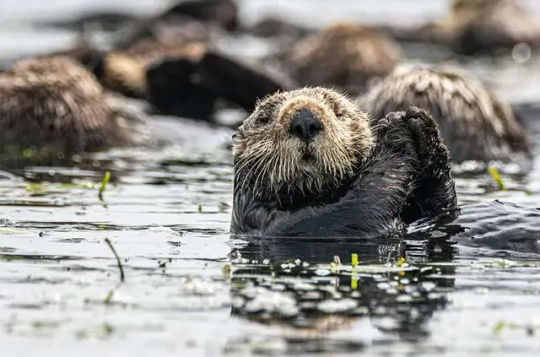
Adult otters need to eat around 25% of their body weight every day to endure the cold Pacific Ocean waters, the equivalent of 20 to 25 pounds. And crabs are one of their favorite meals. After three years, crab densities were 68% higher in fenced areas beyond the reach of otters. The number of crab burrows was also higher. At the same time, marsh grasses inside the fences fared worse, with 48% less mass of leaves and stems and 15% less root mass, a critical feature for capturing sediment that could otherwise wash away, the scientists reported in late January in Nature.
The results point to the crabs as a culprit in the decline of the marshes, as they excavate their holes and feed on the plant roots. It also shows the returning otters’ potential as a marsh savior, even in the face of rising sea levels and continued pollution. In tidal creeks with high numbers of otters, creek erosion was just 5 centimeters per year, 69% lower than in creeks with fewer otters and a far cry from earlier erosion of as much as 30 centimeters per year.
“The return of the sea otters didn’t reverse the losses, but it did slow them to a point that these systems could restabilize despite all the other pressures they are subject to,” said Brent Hughes, a biology professor at Sonoma State University and former postdoctoral researcher in Silliman’s Duke lab.
The findings raise the question of whether other coastal ecosystems might benefit from a return of top predators. The scientists note that a number of these places were once filled with such toothy creatures as bears, crocodiles, sharks, wolves, lions and dolphins. Sea otters are still largely absent along much of the West Coast.
As people wrestle to hold back the seas and revive their ailing coasts, a predator revival could offer relatively cheap and effective assistance. “It would cost millions of dollars for humans to rebuild these creek banks and restore these marshes,” Silliman said of Elk Slough. “The sea otters are stabilizing them for free in exchange for an all-you-can-eat crab feast.”"
-via Anthropocene Magazine, February 7, 2024
#otters#sea otters#conservation#erosion#coastal erosion#coastline#marshes#saltwater#marine science#marine biology#marine animals#sea creatures#ocean#sustainability#soil erosion#erosion control#crab#good news#hope
3K notes
·
View notes
Text

Excerpt from this story from the Associated Press (AP):
More than 80 years ago, a beautiful butterfly called Xerces Blue that once fluttered among San Francisco’s coastal dunes went extinct as stately homes, museums and parks ate up its habitat, marking the first butterfly species in the United States to disappear due to human development.
But thanks to years of research and modern technology a close relative of the shimmery iridescent butterfly species has been reintroduced to the dunes in Presidio National Park in San Francisco. Dozens of Silvery Blue butterflies — the closest living relatives of the Xerces Blue — were released in the restored habitat last week, officials said Monday.
Scientists with San Francisco’s California Academy of Sciences utilized the Academy’s genetic sequencing capabilities and analyzed Xerces Blue specimens in their vast collection to confirm a group of Silvery Blues in Monterey County, about 100 miles (160 kilometers) south of San Francisco, could successfully fill the ecological gap left by the Xerces Blue.
“This isn’t a Jurassic Park-style de-extinction project, but it will have a major impact,” said Durrell Kapan, a senior research fellow and the lead Academy researcher on the project. “The Silvery Blue will act as an ecological ‘stand-in’ for the Xerces Blue, performing the same ecosystem functions as both a pollinator and a critical member of the food web.”
150 notes
·
View notes
Text
Good News - July 8-14
Like these weekly compilations? Tip me at $Kaybarr1735! And if you tip me and give me a way to contact you, at the end of the month I'll send you a link to all of the articles I found but didn't use each week!
1. Zoo welcomes birth of four endangered horse foals
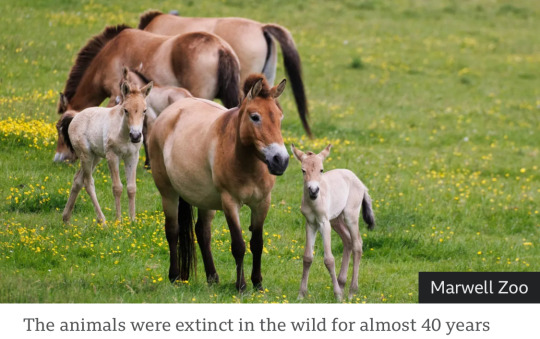
“[The Marwell Zoo in GB] said it was "delighted" to welcome the arrivals to the endangered Przewalski’s horse herd. All four are female and said to be "doing well" after two were born in May and two in June. […] “These horses, that were previously listed extinct in the wild, are an example of how zoo breeding programmes can help restore threatened species around the world.” […] All the Przewalski’s horses alive today are descended from just 12 individuals. Current estimates suggest there are 178 mature individuals living in the wild.”
2. Restoring woodlands and planting trees for sustainability success

“In 2023, [the Marwell Zoo] planted 9,000 new trees […] both within the zoo and on our surrounding land. […] Marwell tries to encourage natural feeding behaviour and nutrition by including leafy material [in animals’ feed] as much as possible. […] Planting more trees and enhancing management of our existing woodlands, prepares the way to further self-sufficiency in browse production in the future. Plus, it creates new habitats for wildlife in our woodland areas.”
3. Inclusive Playgrounds Allow Children Of All Abilities To Play

“With ramps allowing children in wheelchairs to ascend the central play structure, as well as numerous other swings and apparatus usable for children of all abilities, the 16,000-square-foot P.K.’s Place is St. Paul’s first fully inclusive playground. […] To be universally accessible, a play area must have at least 70% of its play features fully accessible, far more than required by the Americans with Disabilities Act (ADA). […] Play areas should allow parents and grandparents with disabilities to participate as well.”
4. Combination treatment can increase human insulin-producing cells in vivo
“[Diabetes-model mice] were treated with the combination therapy [of a plant product called harmine and “a widely used class of type 2 diabetes therapy”] and their diabetes was rapidly reversed. Strikingly, human beta cell numbers increased by 700 percent over three months with this drug combination. "This is the first time scientists have developed a drug treatment that is proven to increase adult human beta cell numbers in vivo. This research brings hope for the use of future regenerative therapies to potentially treat the hundreds of millions of people with diabetes," said Dr. Garcia-Ocaña, the paper's corresponding author.”
5. Decades of Dedication: Australia’s Largest Ongoing Urban Restoration Project
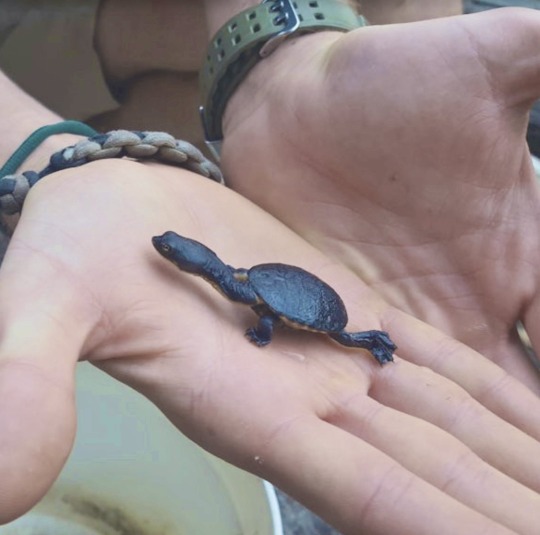
“[Friends of Lake Claremont] has transformed the area into a thriving ecosystem, re-establishing native habitats and fostering biodiversity. This year, 800 native seedlings (100 trees, 350 shrubs and 350 ground covers) have been planted on the northwestern buffer of Lake Claremont. Volunteers replaced a large Port Jackson fig (Ficus rubiginosa) affected by [beetle] infestation with native plants to enhance the local wildlife habitat, thereby benefiting insects, frogs, birds and brown bandicoots. […] Overall, the project contributes to the area’s function as a regional ecological corridor, linking inland bushlands, the Swan River and the Indian Ocean.”
6. Important habitat for fish in Heart of the Fraser now conserved

“British Columbia’s iconic salmon now have more protected spawning habitat in the lower Fraser River, thanks to the Nature Conservancy of Canada’s (NCC’s) conservation acquisition of Carey Island. […] Carey Island and its gravel channels offer calm and crucial spawning and rearing habitat for the river’s fish and aquatic species. […] The Pelólxw Tribe […is also] actively working to restore the resilience of aquatic habitat within this stretch of the Lower Fraser. NCC is exploring opportunities to collaborate with the Pelólxw Tribe in support of their vision for stewardship of the area, which prioritizes both ecological and cultural values.”
7. Prime editing efficiently corrects cystic fibrosis mutation in human lung cells
“[R]esearchers have developed a gene-editing approach that efficiently corrects the most common mutation that causes cystic fibrosis, found in 85 percent of patients. With further development, it could pave the way for treatments that are administered only once and have fewer side effects. The new method precisely and durably corrects the mutation in human lung cells, restoring cell function to levels similar to that of Trikafta [the standard treatment since 2019].”
8. Montana’s High Court Considers a Constitutional Right to a Stable Climate
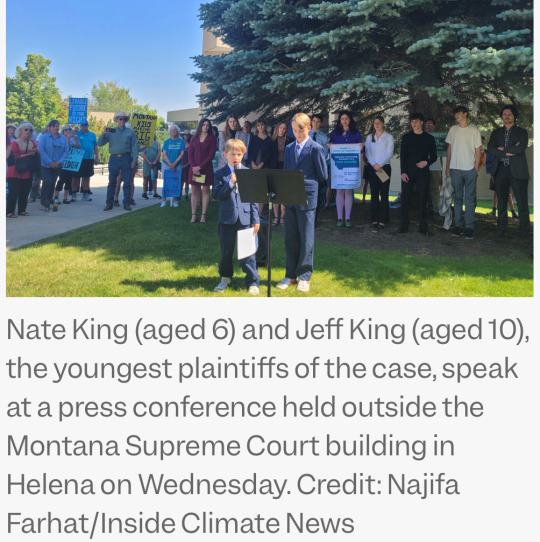
“At issue was the appeal of a decision last year, when a Montana judge blocked a state law that prohibited agencies from considering climate impacts when deciding whether to approve fossil fuel projects such as new power plants, pipelines or mining. The ruling, by District Judge Kathy Seeley, was prompted by a lawsuit filed by 16 youths who argued that the law violated Montana’s constitutional right to a “clean and healthful environment.” It was the first ruling in the United States to effectively establish constitutional rights to a stable climate[….]”
9. The US is about to get its first solar-covered canal

“The first canal-based solar project in the U.S. is nearing completion on tribal lands south of Phoenix, Arizona. […] The long, narrow solar array design would snake along the line of the canal and tap into the local electrical distribution grid every 1,000 feet, or every one megawatt. […] “Canal solar allows for greater power production per land size, cleaner water, less power transmission losses, and significant reduction in evaporation[….]” Covering the entire 8,000 miles of canals and waterways managed by the Bureau of Reclamation with solar panels could generate over 25 gigawatts of renewable energy and reduce water evaporation by tens of billions of gallons[….]”
10. Camera traps offer glimpse of first beaver born in Northumberland for 400 years
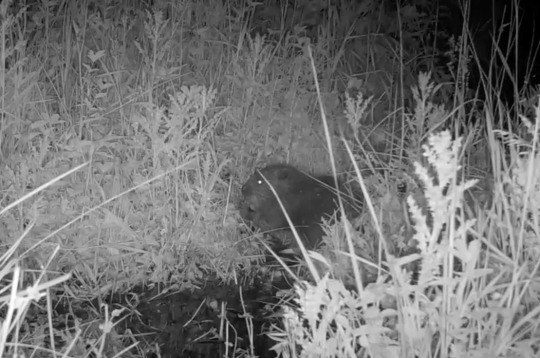
“"It’s such a relief that they have bred successfully and to see a new fluffy kit swimming with the family[….]” In just one year [since releasing the beavers], there has been a noticeable increase in resident trout, says the National Trust, along with more regular visits from kingfishers and grey herons. There are more insects at the site, too, thanks to the organic matter that builds up behind the dams, which in turn provides food for Daubenton’s bats. […] Beavers also play an important role in creating habitats that are more resilient to the effects of climate change[….]”
July 1-7 news here | (all credit for images and written material can be found at the source linked; I don’t claim credit for anything but curating.)
#hopepunk#good news#horse#zoo#nature#extinct species#sustainability#forest#children#disability#playground#disabled#wheelchair#diabetes#medicine#science#urban#biodiversity#ecosystem#fish#first nations#cystic fibrosis#gene editing#climate change#climate#youth#human rights#solar panels#solar energy#beaver
327 notes
·
View notes